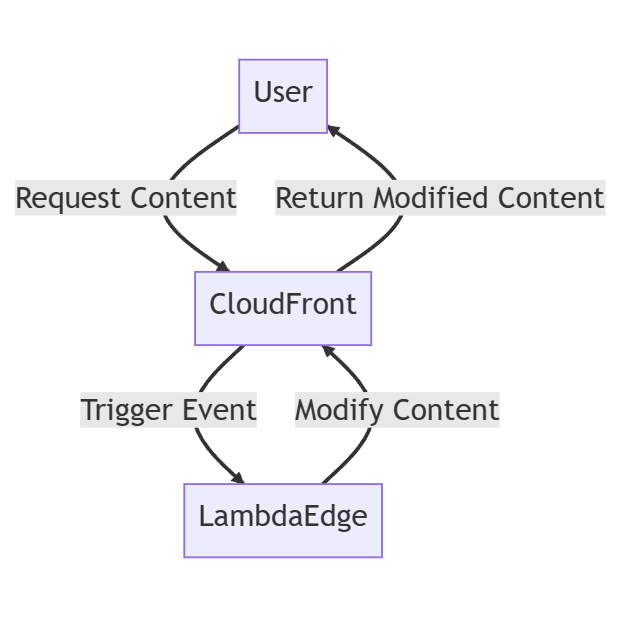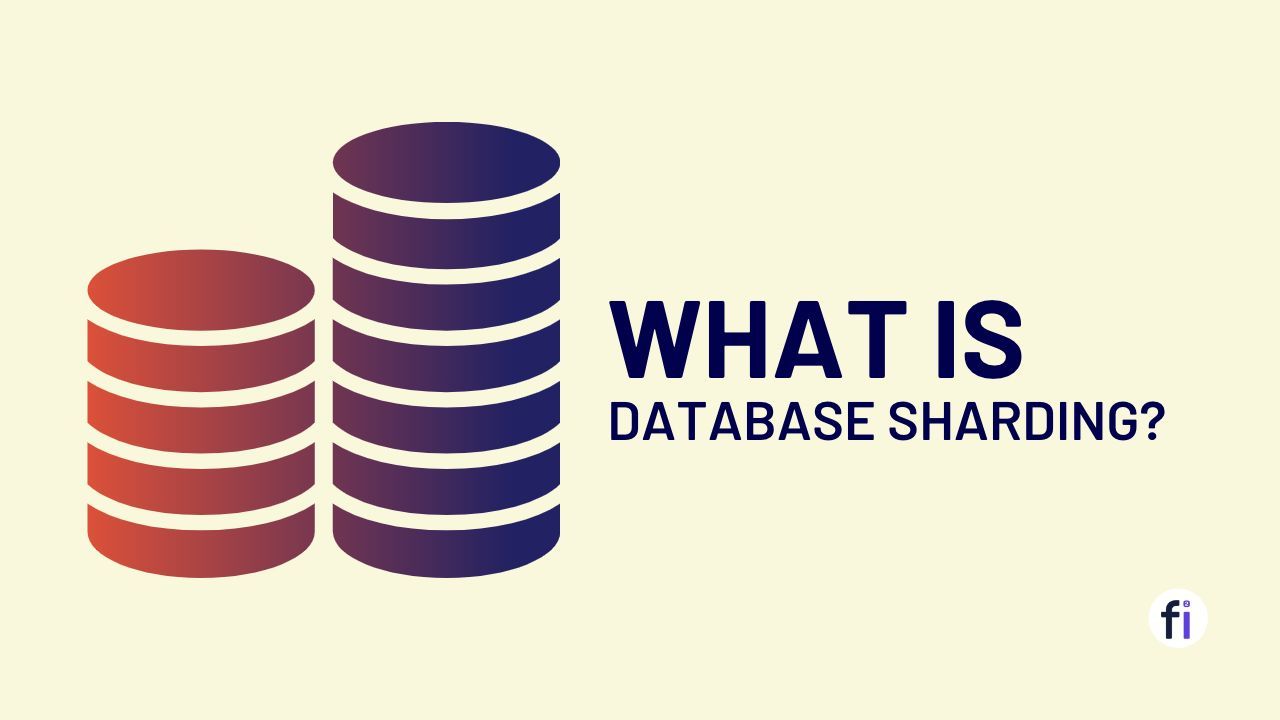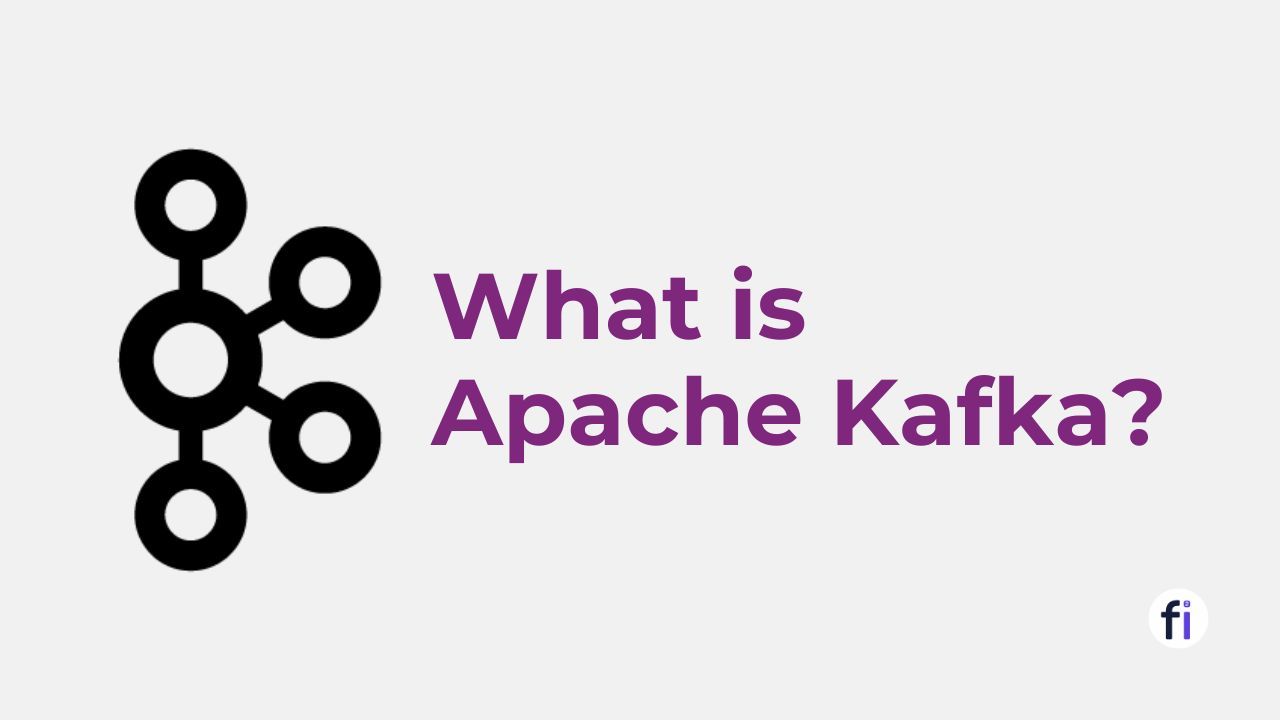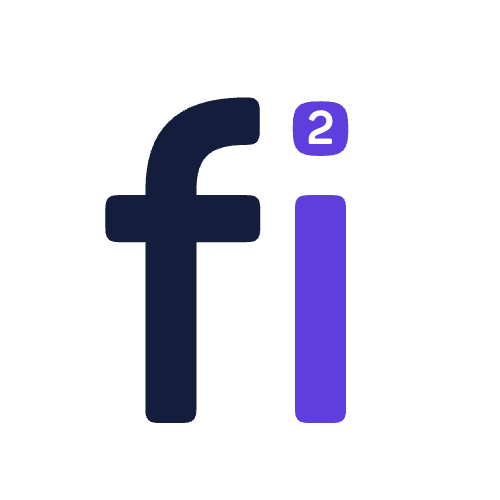Optimizing Content Delivery with AWS Lambda@Edge vs. CloudFront
Discover the key differences between AWS Lambda@Edge and AWS CloudFront. How they differ, and when to use them for your use cases?

AWS Lambda@Edge vs. CloudFront
When it comes to delivering fast and reliable content to users across the globe, Amazon Web Services (AWS) offers a range of powerful tools and services. Two popular options are AWS Lambda Edge and AWS CloudFront. These services play a crucial role in optimizing the performance of web applications and ensuring a seamless user experience. First let's understand "Caching" and how does it work?
What is Caching?
Caching is a technique that improves the performance and efficiency of web applications by storing frequently used data in a temporary storage area called a cache. A cache can be located on the client-side (browser), server-side (web server), or network-level (proxy server).

When a user requests data from a web application, the cache checks if it has a copy of the data that is up-to-date and valid. If so, it returns the data from the cache instead of fetching it from the original source. This reduces the network traffic, latency, and load on the web server. Caching can also enhance the user experience by providing faster and more consistent responses.

AWS Lambda@Edge brings the power of serverless computing to the edge locations of the AWS CloudFront CDN (Content Delivery Network). On the other hand, AWS CloudFront is a globally distributed CDN that helps deliver content with low latency and high availability.
In this blog post, we will compare two AWS services that allow you to run code at the edge of the network: AWS Lambda@Edge and AWS CloudFront Functions. We will explain what they are, how they differ, exploring their features, benefits and when to use them for your use cases.
→ AWS Lambda@Edge
Extending the Power of Lambda to the Edge Locations.
AWS Lambda Edge is a serverless compute service that runs your custom code/Lambda functions at AWS edge locations. It extends the capabilities of AWS Lambda to the edge of the AWS CloudFront network. With Lambda Edge, you can modify and customize the content delivered through CloudFront, allowing you to create highly personalized user experiences.

Also with AWS Lambda Edge, you can enhance the performance, security, and scalability of your web applications by executing code closer to the end users. It enables you to process requests and responses in real-time, making it ideal for scenarios where low latency and personalized content delivery are critical.
Key features and benefits
- Dynamic content customization: Lambda Edge enables you to modify content in real-time at the edge, tailoring responses based on user requests or device characteristics.
- Reduced latency: By executing code at the edge locations nearest to your users, Lambda Edge reduces the round-trip time and improves response times.
- Improved security: You can implement security measures such as access controls and content validation directly at the edge, enhancing the overall security posture of your application.
- Seamless integration with CloudFront: Lambda Edge integrates seamlessly with CloudFront, allowing you to trigger Lambda functions in response to specific CloudFront events.
Use cases for AWS Lambda Edge
- Dynamic content personalization: Lambda Edge enables you to customize content based on user preferences, device types, or geographic locations.
- Request filtering and validation: You can implement custom security measures such as blocking malicious requests or validating content integrity.
- Real-time image manipulation: Lambda Edge can resize, optimize, or watermark images on the fly, ensuring optimal visual experiences for your users.
- A/B testing and experimentation: By leveraging Lambda Edge, you can perform experiments, such as testing different versions of your website, without impacting the origin server.
How AWS Lambda@Edge works?
Lambda Edge functions are written in supported programming languages such as Node.js, Python, and Java. These functions are associated with specific CloudFront events, such as viewer requests or origin responses. When a CloudFront event occurs, the associated Lambda function is triggered at the edge location closest to the user. The function processes the event, can modify the request or response, and returns the result back to the user. Lambda Edge leverages the global network of CloudFront edge locations, ensuring high performance and availability.
Note: Lambda Edge functions have certain limitations, such as shorter execution times and limited disk space. Therefore, complex or resource-intensive tasks might not be suitable for execution at the edge.

→ AWS CloudFront
A Global Content Delivery Network
AWS CloudFront is a globally distributed CDN that accelerates content delivery by caching content at edge locations including images, videos, applications, and APIs. It works by caching static and dynamic content at edge locations worldwide, reducing the latency experienced by users accessing your web applications. It ensures low latency and high data transfer speeds, allowing users to access websites and applications with minimal delay.

As a CDN, AWS CloudFront ensures that your content is distributed across a network of edge locations, which are strategically placed close to your users. This reduces the round-trip time and improves the overall performance of your web applications, providing a faster and more reliable experience for your users.
Key features and benefits
- Global edge locations: CloudFront has a vast network of edge locations strategically located around the world, ensuring content is delivered from the nearest point to the user.
- High performance: By caching static and dynamic content at the edge, CloudFront reduces the load on the origin server and delivers content with low latency.
- Secure content delivery: CloudFront integrates with AWS services like AWS Certificate Manager (ACM) and AWS Web Application Firewall (WAF) to provide secure and encrypted content delivery.
- Integration with AWS services: CloudFront seamlessly integrates with other AWS services, including AWS S3, AWS EC2, and AWS Lambda, allowing you to leverage their capabilities in conjunction with CloudFront.
Use cases for AWS CloudFront
- Static content caching: CloudFront caches static content, such as images, CSS files, and JavaScript libraries, reducing the load on the origin server and improving response times.
- Video and media streaming: CloudFront supports streaming media delivery, enabling smooth and efficient video playback for users worldwide.
- API acceleration: CloudFront can accelerate API requests by caching API responses and reducing the load on backend servers.
- Global website delivery: With CloudFront, you can distribute your website's content across multiple edge locations, ensuring fast and consistent user experiences globally.
How AWS CloudFront works?
When a user requests content from a website or application using CloudFront, CloudFront's edge location nearest to the user serves the content if it is already cached. If the content is not cached or has expired, CloudFront retrieves it from the origin server, caches it at the edge location, and serves it to the user. Subsequent requests for the same content are then served from the edge location, minimizing latency and improving performance. CloudFront supports various caching and distribution options, allowing you to configure its behavior based on your requirements.

AWS Lambda@Edge vs. CloudFront
A Comparison of AWS Content Delivery Services

First of all Lambda@Edge run at the 13 (at the time of writing this post) Regional Caches. CloudFront Functions run at the 200+ Edge Caches. That mean that the your code will run closer to your users.
| Features | AWS Lambda@Edge | AWS CloudFront |
|---|---|---|
| Content customization | Yes | No |
| Dynamic content | Yes | Limited support |
| Caching | No (Edge caching supported) | Yes |
| Performance | Lower latency, real-time | Lower latency, caching |
| Scalability | Highly scalable | Highly scalable |
| Pricing model | Requests and function duration | Data transfer and requests |
| Use cases | Dynamic websites, personalization | Static and dynamic content delivery |
How do the AWS Lambda@Edge & CloudFront differ?
AWS Lambda@Edge and AWS CloudFront Functions have some key differences in terms of performance, scalability, pricing, and limitations. Here are some of them:
- Performance: CloudFront Functions have lower latency and higher throughput than Lambda@Edge, because they run on a faster and more optimized runtime environment. CloudFront Functions can execute in less than 1 millisecond, while Lambda@Edge can take up to 50 milliseconds.
- Scalability: CloudFront Functions can scale to handle millions of requests per second, while Lambda@Edge has a concurrency limit of 1000 requests per second per function per region.
- Pricing: CloudFront Functions are cheaper than Lambda@Edge, because they charge only for the number of requests and the compute duration. Lambda@Edge charges for both of these metrics, as well as for the number of function invocations and the amount of memory allocated.
- Limitations: CloudFront Functions have more restrictions than Lambda@Edge, because they are meant for simpler tasks. For example, CloudFront Functions can only run JavaScript code, while Lambda@Edge supports multiple languages. CloudFront Functions cannot access the request body, make network calls, use async/await patterns, or access the file system, while Lambda@Edge can do all of these things.

When to use AWS Lambda@Edge or CloudFront?
The choice between AWS Lambda@Edge and AWS CloudFront Functions depends on your use case and requirements. Here are some general guidelines:
- Use CloudFront Functions when you need to perform simple and fast transformations on HTTP requests or responses, such as changing headers, cookies, or URLs. CloudFront Functions are ideal for tasks that do not require any external resources or complex logic.
- Use Lambda@Edge when you need to perform more complex and compute-intensive tasks at the edge, such as generating dynamic content, implementing custom authentication or authorization, or integrating with other AWS services. Lambda@Edge gives you more flexibility and functionality than CloudFront Functions.

Use Cases:
AWS Lambda Edge Use Cases

- Dynamic Content Personalization: With AWS Lambda Edge, you can tailor the content delivered to users based on their geographical location, device type, or any other custom logic. For example, you can serve localized images, optimize content for specific devices, or perform A/B testing.
- Real-time Image Manipulation: By leveraging AWS Lambda Edge, you can dynamically resize, watermark, or optimize images on the fly. This helps to reduce bandwidth costs, improve loading times, and deliver an optimal user experience.
- Bot Detection and Mitigation: AWS Lambda Edge allows you to implement custom bot detection and mitigation techniques. You can identify and block malicious bots, reducing the impact of automated attacks on your web applications.
AWS CloudFront Use Cases

- Global Content Delivery: AWS CloudFront excels at distributing your content across a global network of edge locations. It ensures that users worldwide can access your web applications with low latency, regardless of their geographical location.
- Static and Dynamic Content Caching: With AWS CloudFront, you can cache both static and dynamic content at the edge locations. This significantly reduces the load on your origin servers and improves the response times for subsequent requests.
- Secure Content Delivery: AWS CloudFront provides built-in security features, such as HTTPS encryption, SSL/TLS certificate management, and integration with AWS Web Application Firewall (WAF). It helps protect your web applications and content from unauthorized access and malicious attacks.
Use Cases and Suitable Scenarios for Each Service
- AWS Lambda Edge is suitable for scenarios that require real-time content customization, security enhancements, or personalized user experiences. Examples include dynamic web applications, e-commerce sites, or location-based content delivery.
- AWS CloudFront is ideal for scenarios where fast content delivery, high availability, and scalability are crucial. It is commonly used for static and dynamic web content, media streaming, API acceleration, and global website delivery.

Differences in Functionality

- AWS Lambda Edge is an extension of AWS Lambda, allowing you to run custom code at the edge locations of AWS CloudFront. It provides the capability to modify and personalize content dynamically.
- AWS CloudFront, on the other hand, is a CDN that primarily focuses on content delivery and caching. It accelerates the delivery of static and dynamic content by caching it at edge locations.
Performance and Scalability Considerations

- Lambda Edge offers lower latency and faster response times as it executes code at the edge locations, closer to the user. It is well-suited for use cases that require real-time content customization or personalization.
- CloudFront, with its global edge locations, ensures fast content delivery to users worldwide. It excels in scenarios where efficient content caching and distribution are critical.

Pricing and Cost Comparison
- With Lambda@Edge you pay $0.60 per 1 million requests plus the execution time ($0.00000625125 FOR EVERY 128MB-SECOND).
- AWS Lambda Edge pricing is based on the number of requests and the duration of the function execution. It is essential to consider the frequency of function invocations and the complexity of the code to estimate costs accurately.
- AWS CloudFront pricing is based on data transfer out, the number of requests, and additional features such as HTTPS support. It is crucial to evaluate the expected traffic volume and the geographic distribution of your users to determine costs effectively.
- With CloudFront Functions you pay $0.10 per 1 million Invocations and nothing for execution time.
- That mean that CloudFront Functions is the cheapest option of the two.
Best Practices and Recommendations
- Evaluate your application's requirements and determine whether dynamic content customization or efficient content delivery is the primary focus.
- Consider the limitations and execution time constraints of Lambda Edge functions when designing your application's architecture.
- Leverage the integration between AWS Lambda Edge and AWS CloudFront to combine their capabilities and achieve optimal results for your use case.
Conclusion
In summary, AWS Lambda Edge and AWS CloudFront are both helpful tools for improving the performance and delivery of web applications. AWS Lambda Edge is great for tasks like customizing content, manipulating images, and detecting bots at edge locations. On the other hand, AWS CloudFront is excellent for delivering web content quickly across the globe by using caching.
To choose between AWS Lambda Edge and AWS CloudFront, think about what you need for your specific situation, like performance goals and budget constraints. By understanding the differences and benefits of these services, you can make the right decision to enhance user experience and make your web applications successful.
Both AWS Lambda Edge and AWS CloudFront are important for optimizing website performance and delivering content efficiently. AWS Lambda Edge lets you run custom code at edge locations, which helps with personalized experiences for users. AWS CloudFront, as a global content delivery network, is excellent at delivering static and dynamic content quickly and reliably. By knowing how these services work and when to use them, you can make a smart choice based on your needs.




Frequently Asked Questions (FAQs)
Can I use AWS Lambda Edge and AWS CloudFront together?
Absolutely! AWS Lambda Edge and AWS CloudFront are designed to work seamlessly together.
Is there a difference in pricing between AWS Lambda Edge and AWS CloudFront?
Yes, AWS Lambda Edge pricing is based on the number of requests processed and the duration of the executed code. On the other hand, AWS CloudFront pricing is primarily determined by the data transfer out from the edge locations and the number of requests made to your content.
Can I use AWS Lambda Edge or AWS CloudFront with other AWS services?
Certainly! Both AWS Lambda Edge and AWS CloudFront can be integrated with other AWS services to create powerful and scalable architectures. For example, you can combine AWS Lambda Edge with AWS S3 for storing and retrieving content, or leverage AWS CloudFront alongside AWS Elastic Load Balancer for distributing traffic across multiple backend instances.
Which service should I choose if I only need a CDN for my web content?
If you only require a CDN to accelerate the delivery of your web content without the need for serverless compute capabilities, AWS CloudFront is a suitable choice.
Are there any limitations I should be aware of when using AWS Lambda Edge?
Yes, The maximum execution time for Lambda functions at the edge is currently set to 5 seconds, and the maximum response size is limited to 50 MB. Additionally, not all AWS Lambda features and runtimes are available at the edge.
Can I monitor the performance and usage of AWS Lambda Edge and AWS CloudFront?
Yes, AWS provides comprehensive monitoring and logging capabilities for both AWS Lambda Edge and AWS CloudFront. You can leverage services like Amazon CloudWatch and AWS CloudTrail to gain insights into the performance, usage, and behavior of your applications.
Is AWS CloudFront limited to caching static content only?
No, AWS CloudFront can cache both static and dynamic content. It provides options to configure caching behaviors based on content types, headers, or query strings.
What programming languages are supported by AWS Lambda Edge?
AWS Lambda Edge supports programming languages such as Node.js, Python, and Java. You can write Lambda functions in these languages to customize content at the edge.

